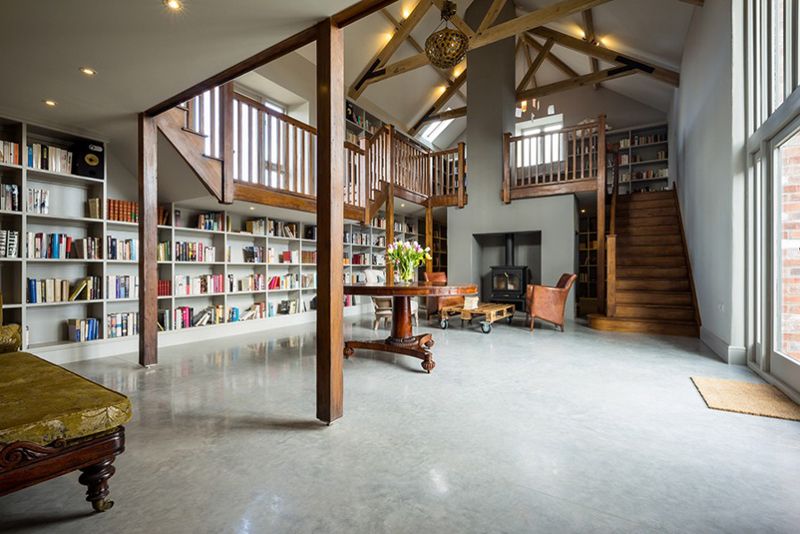Concrete flooring has surged in popularity, especially in homes with an industrial decor style. Why, you ask? It’s simple: concrete floors are sleek, minimalist, and incredibly versatile. Not to mention, they are a breeze to clean and maintain, keeping your home looking stylish and cozy year-round.

Here’s everything you need to know before installing concrete flooring in your kitchen, bedroom, living room, or any other space in your home.
Positive aspects of having concrete flooring in the house
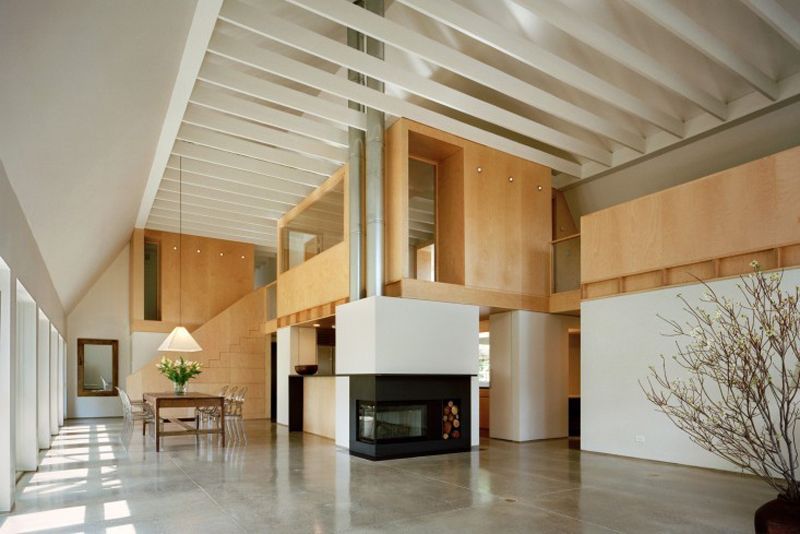
Polished concrete flooring boasts numerous benefits that make it a top choice for homeowners. Let’s dive into some of the standout advantages:
- Brightens Your Space. With the right concrete stain, your floors can reflect light, brightening up even the sunniest rooms in your home.
- Creates an Illusion of Space. Concrete floors can make smaller rooms appear larger and more open, enhancing the overall flow of your home.
- Allergy-Friendly. Unlike carpets that trap dirt, dust, and pollen, concrete floors are hypoallergenic, making them ideal for allergy sufferers.
- Durability. Concrete floors are tough as nails and can withstand heavy foot traffic, making them perfect for busy households.
- Easy to Personalize. From polished concrete to decorative concrete options, these floors can be customized to fit your style.
- Seamless Design. With no grout lines to interrupt the flow, concrete floors offer a smooth, continuous surface that’s easy to clean.
Possible disadvantages of this type of concrete flooring

Like any flooring option, concrete floors come with their own set of considerations. Here are a few potential drawbacks:
- Cost. High-quality polished concrete floors can be expensive, but many homeowners find the investment worthwhile for their durability and aesthetic appeal.
- Risk of Cracks. If not installed correctly by a professional, concrete can develop cracks over time. It’s crucial to hire experienced installers to ensure a flawless finish.
- Cold Underfoot. Concrete can be chilly, especially during the winter months. However, this can be mitigated with radiant heating systems or cozy area rugs.
- Hard Surface. Concrete floors can be tough on your feet if you’re not wearing socks or slippers. Adding cushioned mats in high-use areas can help.
Techniques to follow in order to create a concrete floor
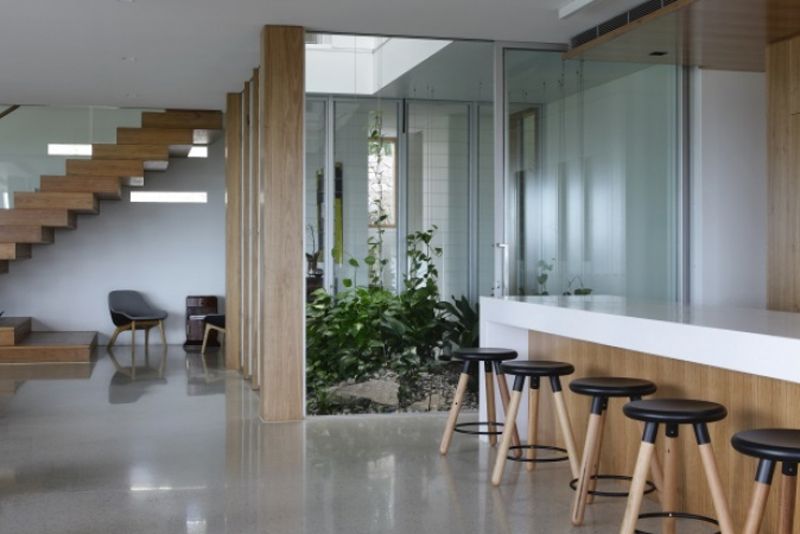
Contrary to popular belief, installing concrete flooring doesn’t mean you’ll have a cement truck parked in your living room.
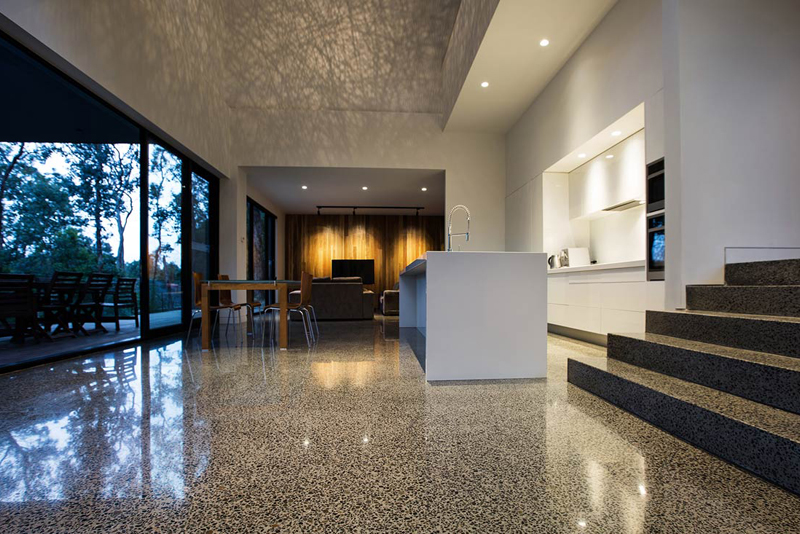
There are several neat techniques to achieve a polished, stylish finish without the mess.
- Honed Floors. This technique involves sanding the concrete with industrial abrasives to create a smooth, matte finish. It’s perfect for achieving a sleek, understated look.
- Troweled Finish. Toweling is used to achieve a polished surface. This technique involves multiple steps of smoothing and refining the concrete to get that perfect sheen.
- Burnished Surface. For this technique, a topcoat is applied to already set concrete. It gives the floor a glossy finish and can help protect the surface from stains and scratches.

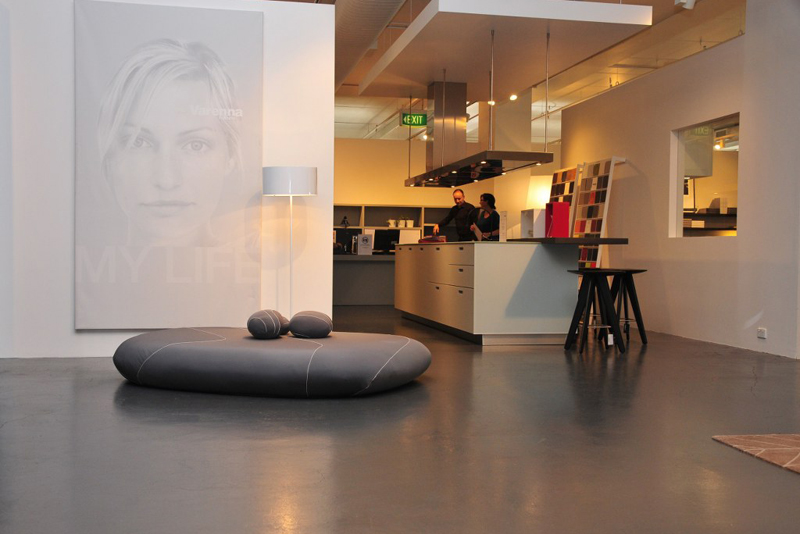
Finish look of concrete flooring of your choice

The final look of your concrete flooring depends largely on your personal taste and budget. Here are a few options to consider:
- Polished Concrete. Polished concrete floors can be treated with a paste polish to achieve a consistent color and shine. This option is great for a modern, industrial look.
- Deep Polish. For those embracing an industrial interior design, a deep polish can add depth and character to your concrete floors, making them a focal point of your decor.
- Stained Concrete. If you want to add some color to your floors, stained concrete is the way to go. Acid stains can create rich, variegated tones, while water-based stains offer a broader color palette.
- Colored Concrete. For a more vibrant look, you can opt for fully colored concrete. This technique involves adding pigments to the concrete mix to achieve a bold, uniform color.
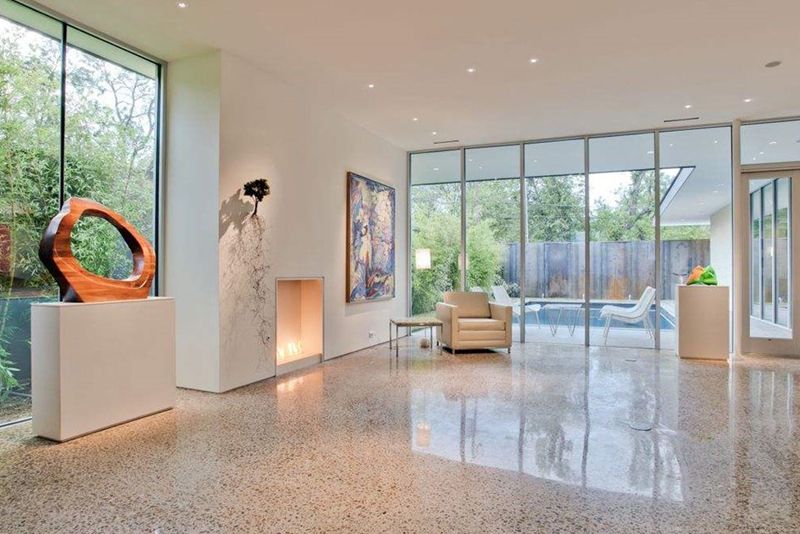
Incorporating decorative elements like acid staining or scoring can turn a simple concrete floor into a work of art. Acid staining creates a marbled effect, giving your floors a rich, variegated appearance. Scoring, on the other hand, involves cutting shallow grooves into the surface of the concrete to create patterns or designs. These techniques can be combined to produce truly unique floors that reflect your personal style.
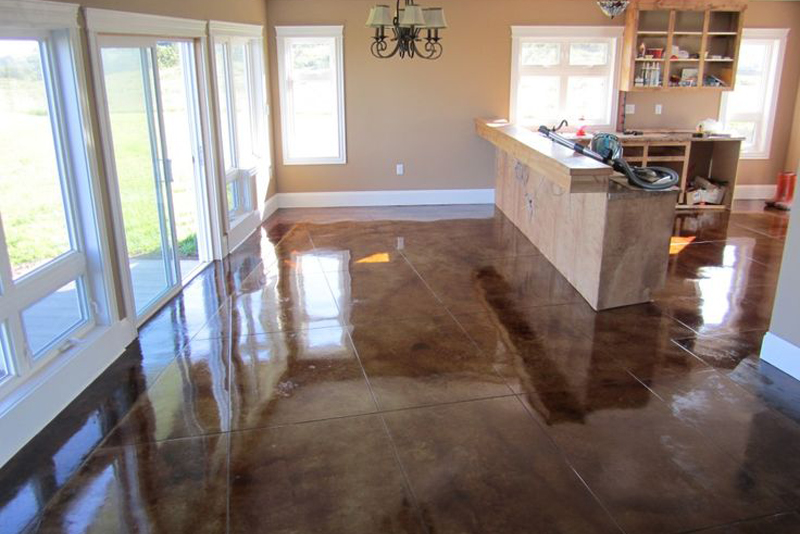
Concrete flooring is more than just a practical choice; it’s a stylish and sustainable option that can enhance any space. With its durability, low maintenance, and endless design possibilities, it’s no wonder more people are choosing concrete floors for their homes and businesses. So whether you’re renovating a single room or designing an entire building, consider the many benefits of concrete flooring. It’s a decision you won’t regret – sturdy, stylish, and built to last, concrete floors are truly the foundation of a beautiful home.

